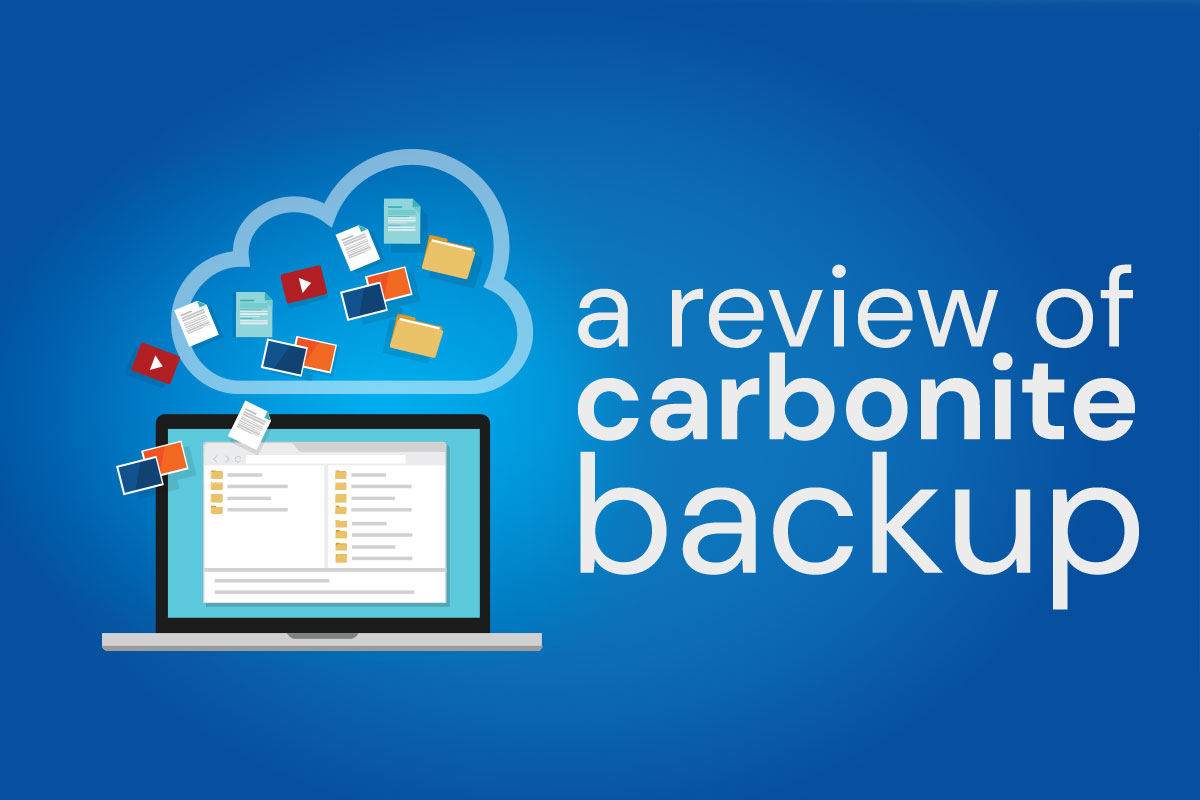So that cooler heads would prevail, I waited for a while to write this post. Last month one of our team (me) started experiencing the Blue Screen of Death, and later that day—a total hard drive failure. As enthusiastic supporters of backup systems, I had implemented several different backup systems, but all of them are cloud-based. Our team members who office in the same space use a Synology for local backup on top of their cloud backup, and it’s fantastic, but I don’t have one set up… yet. Said team members also use AWS (Amazon Web Services) for cloud storage, which is extremely inexpensive and secure, but doesn’t provide a friendly interface for performing backups. Having chosen among several easy-to-use cloud backup platforms, I’ve been a Carbonite subscriber for about eight years. Here is my review of Carbonite.
With the existence of so many great cloud backup services these days, there is no excuse for what’s happened with Carbonite.
Day 1 of Carbonite Restore: March 28
I began the Carbonite restore on March 28, which involved downloading 450 GB of data to my brand new SSD (Solid State Drive) hard drive, which I cannot recommend enough. The old hard drive was a SATA, which is much more prone to failure because of its moving parts. On day 1, I was disappointed that no actual data was being retrieved; instead, Carbonite was recreating my folders. Fortunately, I was able to download my most critical files directly using Carbonite’s web interface, and the download speed was comparable to any other file I might download. My download speed is 85 Mbps, which my teammates laugh at but is perfectly adequate in almost all situations.
Day 7 of Carbonite Restore: April 3
After seven days had passed, my folders were 96% done being created. That’s right; not a single byte of data was restored in the first week. I contacted tech support several times and no one at Carbonite felt that this was irregular.
Day 11 of Carbonite Restore: April 7
My data was 4% done downloading. Remember, this is 450 GB of data. If I had been downloading my data myself at my pathetic 85 Mbps speeds, it would have taken 14 hours, 2 minutes, and 9 seconds. Carbonite limits download of data to a speed of 10 Mbps. Okay then: once my data started being restored, it should have taken 4 days, 23 hours, 18 minutes, and 16 seconds. Let’s give Carbonite the benefit of the doubt and round up to 6 days. By all rights, my data should be back on my hard drive by day 17, April 13.
Day 17 of Carbonite Restore: April 13
Guess what. My data is not done downloading. Also, I should note, my fonts were not included in my Carbonite backup. To some people this might be a trivial matter; to a design director, it is not.
Day 31 of Carbonite Restore: April 27
Guess what. My data is STILL not done downloading. From the crude progress bar, it appears to be about 66% done. By my estimate, it should take a few more weeks to finish downloading.
The takeaway: set up a Synology for local backups if you have a lot of data. And do choose a cloud backup service that you’ve tried and like (preferably Mozy or Crashplan, not Carbonite). Spring for the solid state hard drive. Don’t forget to back up your photos, especially on your phone, to Google Drive and/or Flickr for free. And if you do have questions, contact us for help!






